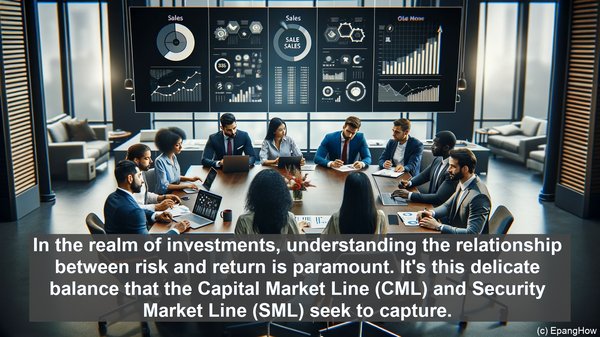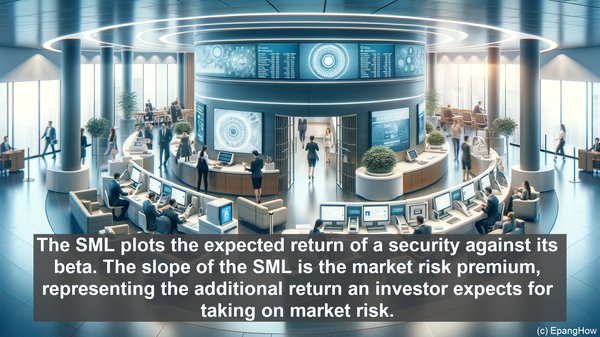Introduction: The Intersection of Risk and Return
Hello everyone! Welcome to today’s article, where we’ll be exploring the intriguing world of finance. In the realm of investments, understanding the relationship between risk and return is paramount. It’s this delicate balance that the Capital Market Line (CML) and Security Market Line (SML) seek to capture. While they may sound similar, they have distinct roles and applications. So, let’s dive in and unravel the differences between CML and SML!
The Capital Market Line: A Holistic View
When it comes to constructing an investment portfolio, the Capital Market Line (CML) is a crucial tool. It represents the ideal risk-return tradeoff for a diversified portfolio. The CML is derived from the efficient frontier, which is a set of portfolios that offer the highest return for a given level of risk. However, what sets the CML apart is that it incorporates the risk-free rate of return. This rate, often represented by government bonds, is considered to have no associated risk. By including the risk-free rate, the CML provides a comprehensive perspective on the risk-return tradeoff, considering both the market’s risk and the risk-free rate.

The Security Market Line: Assessing Individual Securities
While the CML looks at the big picture of portfolio construction, the Security Market Line (SML) zooms in on individual securities. The SML is a graphical representation of the Capital Asset Pricing Model (CAPM), a widely used tool in finance. The CAPM helps determine the expected return of an individual security, taking into account its systematic risk, also known as beta. Beta measures a security’s sensitivity to market movements. The SML plots the expected return of a security against its beta. The slope of the SML is the market risk premium, representing the additional return an investor expects for taking on market risk. By assessing a security’s position on the SML, investors can gauge its attractiveness in relation to its expected return and risk.

Diverse Applications: CML vs SML
The CML and SML have diverse applications in the world of finance. The CML, with its focus on the overall risk-return tradeoff, is often used in the construction of diversified portfolios. It helps investors determine the optimal allocation of assets, considering both the market’s risk and the risk-free rate. On the other hand, the SML is instrumental in security analysis. By assessing a security’s position on the SML, investors can determine whether it is overvalued or undervalued. This information is crucial in making informed investment decisions. Moreover, the SML is also used in the calculation of a security’s cost of equity, a key input in various financial models.
